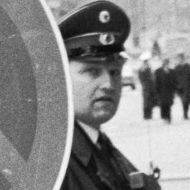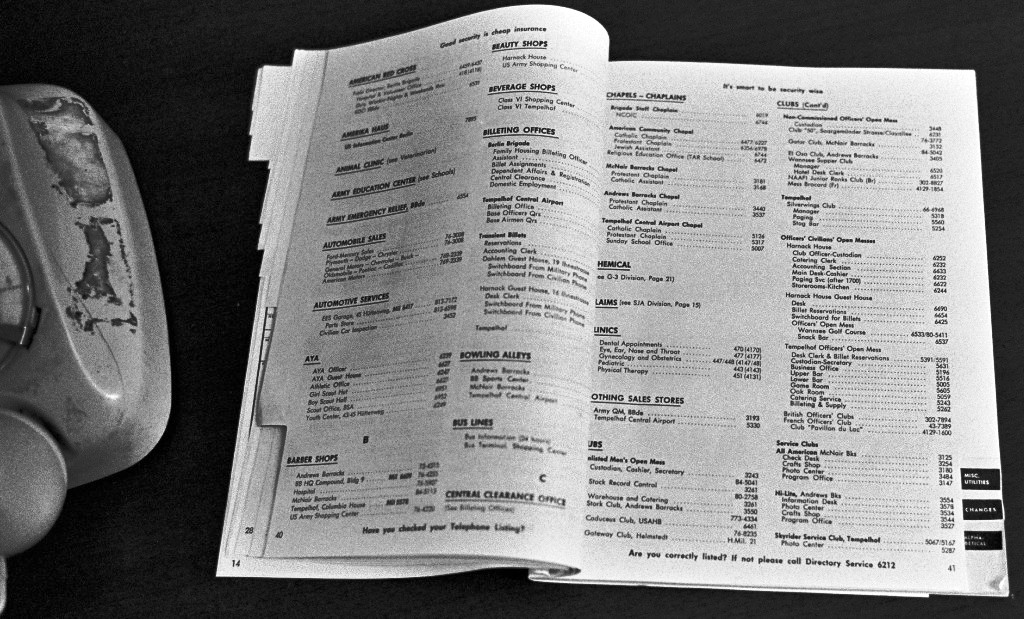– monitoring the West Berlin links with the West
by R. W. Rynerson
Part One – Secret Document
Major General Georg Reymann looked over the document he was about to sign. Neatly typewritten. Heading in the correct format for the Ministry of National Defense, Chief of Intelligence. Date 30 October 1965 correct. Addressee at the Ministry for State Security correct. And two large warnings neatly rubber-stamped:
— Persönlich (Personal)
— Geheime Verschlußsache (Secret Document)
He checked the following pages with a sharp eye trained in the Wehrmacht. The clerk had gotten a bit punchy with the ‘Secret’ rubber stamp by the sixth page and had not stamped the attached map on the seventh page. But the consolidated technical data was well organized. A reader working for the German Democratic Republic (GDR) on the reorganization of electronic intelligence gathering would not be distracted by documents coming from clandestine sources mingled with open source information gathered from radio frequency bureaus.
The information was neatly laid out in a standard format. Section 1 was military connections, reflecting the priorities of the Nationale Volksarmee. According to the report, the United States military operated two “Richtfunkstrecken” (fixed link radio systems akin to microwave networks, but transmitted over longer distances).
+ The first linked Berlin headquarters on Clayallee with a station in Bocksberg, West Germany. Employing ultra-short wave technology and a dipole antenna field, it carried 42 channels of voice, text and possibly data.
+ The second linked the Army Security Agency portion of the facility perched on Teufelsberg in the British Sector of West Berlin with a station at Wunstorf in West Germany. With its parabolic “mirror” antenna it bounced signals off of the troposphere to arc over the Soviet Zone of Germany, thought of by MG Reymann as “Democratic” Germany. Its state of the art AN/MRC-85 system carried 24 channels of voice, text and possibly data in frequencies ranging from 350 MHz to 2700 MHz.
Both the British and French military in Berlin operated ultra-short wave links with stations in West Germany. The exact destination of the British signal from the Olympic Stadium’s dipole antenna field was unknown, an omission which must have bothered the Major General. It was relayed to the British staff headquarters at Mönchengladbach. The French signal linked with a station at Schalkenberg, using a dipole antenna field and a parabolic reflector.
Section 2 covered the civil networks. In the 17 years since the first West Berlin – West Germany link was established between Berlin-Wannsee and Torfhaus/Harz, GDR monitors had contested against a relentless push by the “other” Germans to expand the quantity and quality of telecommunications. With the 1955 launch of service via three 150 meter masts at Nicolassee, only the most important intelligence traffic could be monitored. By 1963, the general noted, an annual total of 11.8 million telephone calls were carried on the civil network operated by the Bundespost (West Germany) and the Landespost (West) Berlin.
Reymann sent off the report. In football terms, he was passing the ball laterally to a player more likely to score — later known as the Stasi.
=========================================
Sources for this section:
1. Memo from Major General Reymann, Engineer, to future Colonel position in Ministry for State Security, Section N.; BstU, ZA, MfS – Abt. N, No. 77.
2. Schmidt, Andreas; “Aufklarung” des Funkverkehrs und der Telefongespräche in Westdeutschland – Die Hauptabteilung III; in Knabe, Hubertus; West-Arbeit des MfS; Ch.Links Verlag; Berlin; 2nd edition 1999.
Additional information:
http://en.wikipedia.org/wiki/Tropospheric_scatter
http://de.wikipedia.org/wiki/Richtfunkverbindung_nach_West-Berlin
http://de.wikipedia.org/wiki/Wikipedia:WikiProjekt_NVA/Liste_der_Generale_und_Admirale_der_NVA
=========================================

